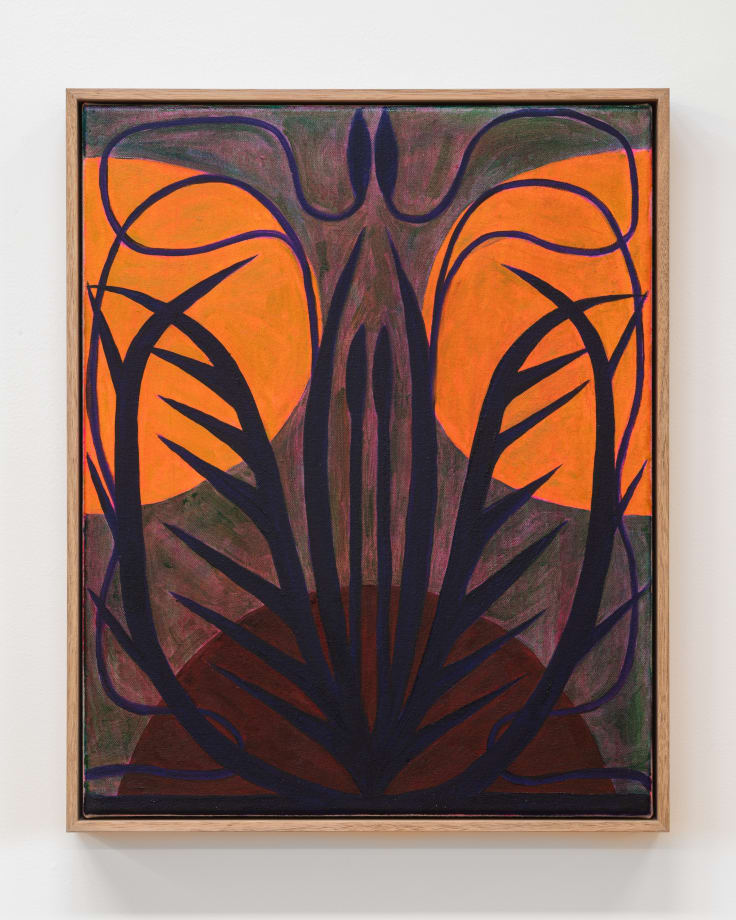Throughout history many visual artists have turned to the botanical world for inspiration. While the outcome of these flowery meditations may result in the depiction of a seemingly innocuous bunch of painted blooms there is often more to these works than meets the eye.
One might first recall those 17th and 18th Century Dutch still-life floral arrangements laden with elaborate moral and spiritual symbolism. Or perhaps the iconic water lily paintings of Impressionist Claude Monet painted in response to the tragedy of the First World War. Consider Henri Matisse’s famous cut-outs, initially a process used to plan his paintings but in later years a necessity to artistic expression as Matisse’s health and mobility deteriorated. Then there are American artist Georgia O’Keefe’s large-scale closely cropped paintings that transformed botanical subjects into compositions emphasising the vastness of the natural world. Or Swedish artist-mystic Hilma af Klint’s early botanical studies that eventually led to the creation of paintings now considered among the first abstract works in Western art history, and which drew on spiritual and scientific inquiries to better understand the natural and occult, with the artist’s own personal iconography giving form to the various stages of human life.
In Aotearoa, we have our own complex history of artists making work in response to the flora within our natural landscape. There are the pītau or fern fronds that appear within the Māori visual language of kōwhaiwhai, which first emerged carved or painted on the rafters of wharenui; the brightly coloured flowers of Tīvaevae, an art form believed to have been introduced to the Pacific region in the 19th Century by missionary wives; Sydney Parkinson’s botanical illustrations made on Captain Cook's voyage to the Pacific; Frances Hodgkins’ bold semi-abstracted still-life paintings featuring flowers and other cyphers of femininity as self-portraits; or Rita Angus’s careful watercolours, hardly ever purely visual representations of plants and flowers, but rather carriers of mystery, symbolism, and significance for the artist.
Today, contemporary practitioners are increasingly making work that highlights the impact upon Aotearoa’s Indigenous ecology as a result of species introduced through colonial expansion and capitalist economies, and further excavating this fertile landscape to explore notions of feminism, sexuality, and reproduction and the ways in which cultural, medicinal, spiritual, and scientific knowledge is passed down through generations or lost to the annals of time.
Sarah Munro’s Trade Items series consists of delicate embroideries directly borrowing from a watercolour and pencil drawing by Ra'iatea navigator Tupaia who accompanied Cook aboard HMS Endeavour that captures the exchange of a crayfish for a length of cloth or tapa. Munro’s embroideries depict this same moment, with the artist substituting different animal and plant species and objects for European ones.
In Karl Maughan’s painted gardens the prevailing rules and rhythms of nature and weather and seasonal growth can be set aside, with Maughan often cultivating endemic and introduced species in an abundant and idealised amalgam of eternal spring. The artist has long presented a kind of speculative survey of regionalism through his paintings, in turn prompting consideration of those gardens of early colonial settlers and the romantic but arguably anachronistic desire to establish traditional English gardens in the Pacific.
Reuben Paterson’s distinctive glitter works explore subjects that include Kōwhaiwhai, Dutch still-life, as well as textile traditions such as Cook Island Tivaevae and histories of the western appropriation of eastern textile designs and techniques. Paterson’s glittering paintings often linger at the edge of our visual perception and earthly understanding – hinting at moments of personal revelation, seasonal growth, and new beginnings – while drawing upon the connection between Papatūānuku the earth mother and Ranginui the sky father.
William Morris inspired wallpapers and miniature versions of still-life paintings adorn the walls of Laura Williams’ elaborately painted interior scenes. Williams’ painted flowers embody and embrace disparate, sometimes contradictory and controversial meanings across various periods and cultures: Marigold – grief, jealousy, despair, cruelty, purity, and divinity; Passionflower – suffering, cruelty, sorrow, grief, religious fervour, piety, and faith; Belladonna Nightshade – poison, death, female beauty, danger, rebirth, religious fervour, silence, and falsehood; Buttercup – childishness, charm, joy, youth, purity, friendship, ingratitude, and unfaithfulness; Geranium – lost hope, folly, stupidity, happiness, good health, and friendship; and Pansy – thoughtfulness, fragility, shyness, bohemianism, a derogatory term.
Turumeke Harrington’s work Hei Aho responded specifically to the site of Te Ara Ātea, the new public library in Rolleston and was informed by Ngāi te Ruahikihiki cultural narratives and taonga species such as tī kōuka. Much like the cabbage tree was used by her tīpuna for wayfinding across the Canterbury Plains, Harrington’s work offered a glowing beacon in the first-floor window of the building. Now reconfigured here, these works continue to act as a form of wayfinding in the context of an entirely new geography.
Rosa Allison’s Her Sap Rising (2024) and Luteal phase (2024) sees the artist grafting her gardening and painting practices through a budding interest in learning more about the various ways in which lunar phases impact both women’s menstrual cycles as well as planting and harvesting. Allison has created a witch’s garden in a local community garden, planting healing, poisonous, and magical plants from which she draws creativity and insight.
Bunch also includes works from Elizabeth Thomson, Hiria Anderson-Mita, Dick Frizzell, Rita Angus, Jeffrey Harris, Emily Wolfe, Max Gimblett, and Salome Tanuvasa.















